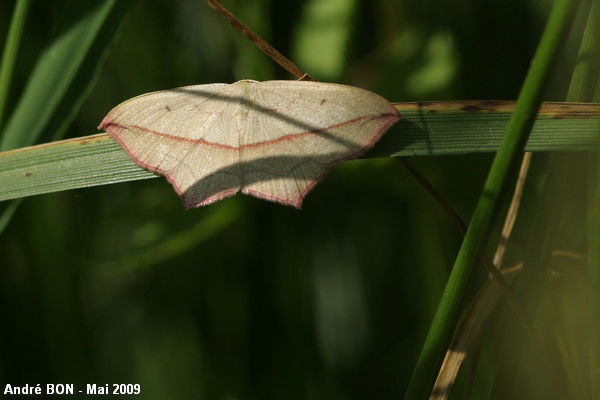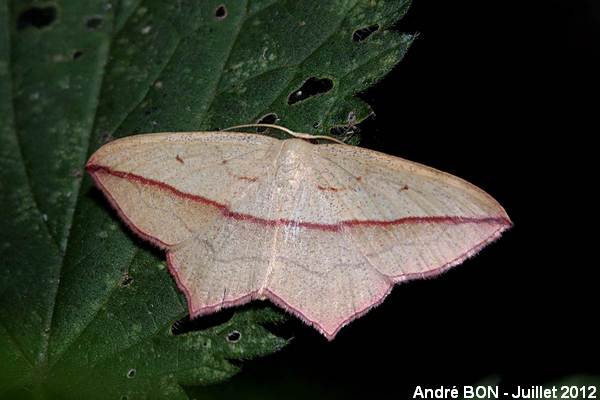

| Blood-vein (Timandra comae (Schmidt, 1931)) |


|
|
Scientific name: Timandra comae (Schmidt, 1931) Common name: Blood-vein French name: Timandre aimée, Phalène anguleuse Order: Lepidoptera Suborder: Heterocera Family: Geometridae Subfamily: Sterrhinae Wingspan: 30-35 mm. Biotope: Damp forests, open meadows, fallow lands, road sides, pond banks. Geographic area: Europe, Asia east to Japan. In northern Europe and northern Asia it is replaced by Timandra griseata which is now recognized as a separate species. Flight time: May to July then August to September. Number of generations : 2 Caterpillar: Greyish brown with dark marks on the back. Host plant: Low growing plants, Sorrels (Rumex sp.), Common Knotgrass (Polygonum aviculare) and Hedge Bindweed (Calystegia sepium). |
The tip of the forewings and the shape of the hind wings give an angular aspect to the Blood-vein when at rest. The wings are a cream, whitish or pinkish ground colour. The bright reddish line running form the apex of the forewing and the other one crossing the hind wing seem to form a continuous diagonal band. A less visible greyish line crosses the post median area. Both wings bear a bright reddish fringe. The similar northern species, Timandra griseata, is missing this reddish fringe. The Blood-vein is active late in the day and during the night. You can sometimes observe it on flowers during the day. It is attracted to light. The Blood-vein overwinters as a larva. |
| [To know more about the Blood-vein] [Next picture] [Top] |

|
The Blood-vein is a nice moth, easy to tell apart. Next time I will try to avoid the shadows of the surrounding plants. |
| [To know more about the Blood-vein] [Previous picture] [Top] |

|
I have observed this Blood-vein in the shadow of a dense woodland. I had to use the flash light to be able to take the picture. |